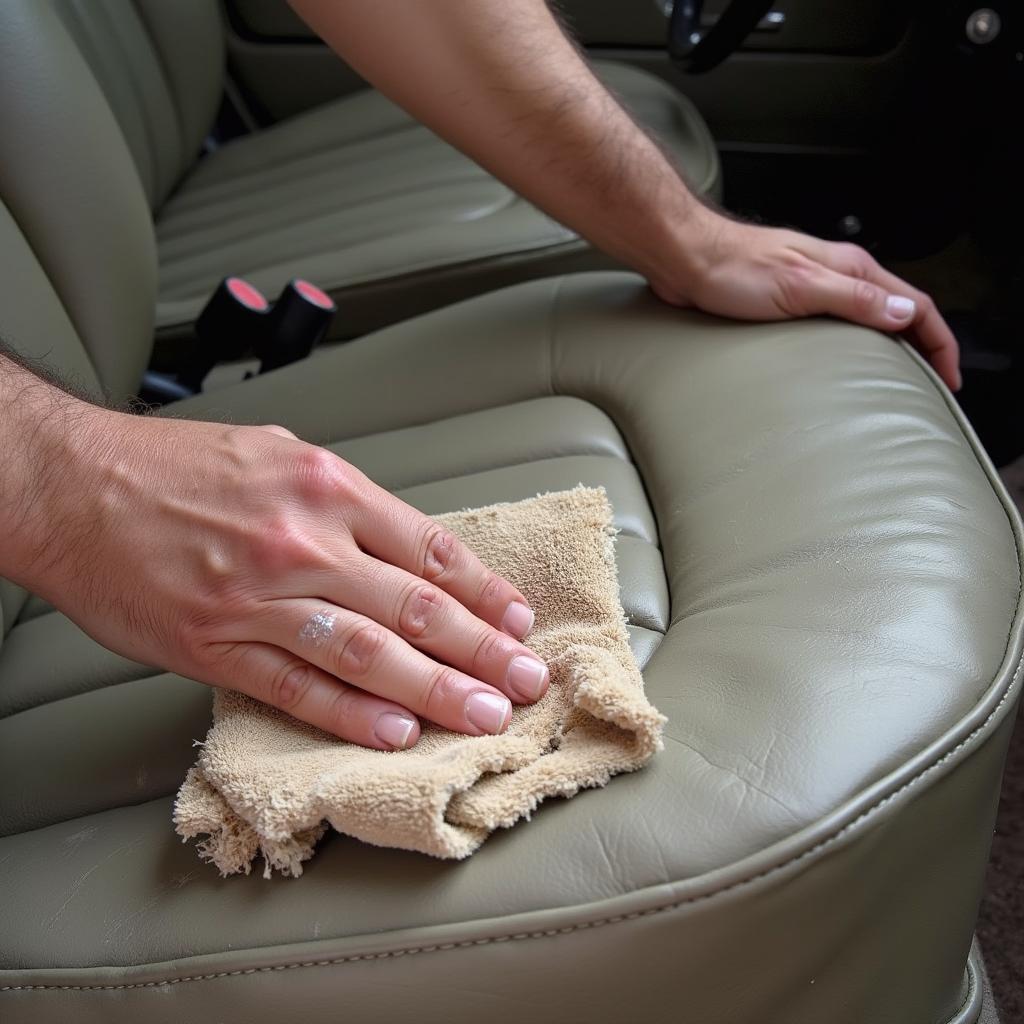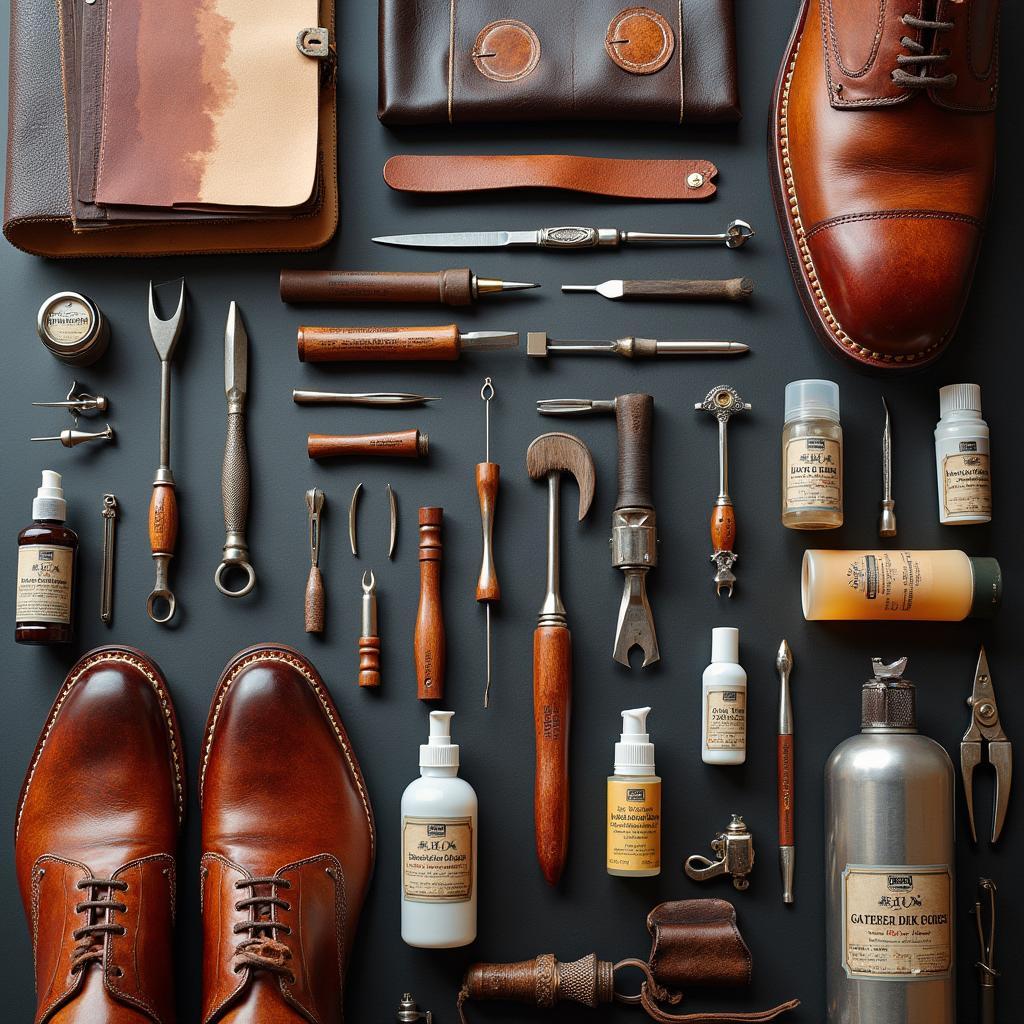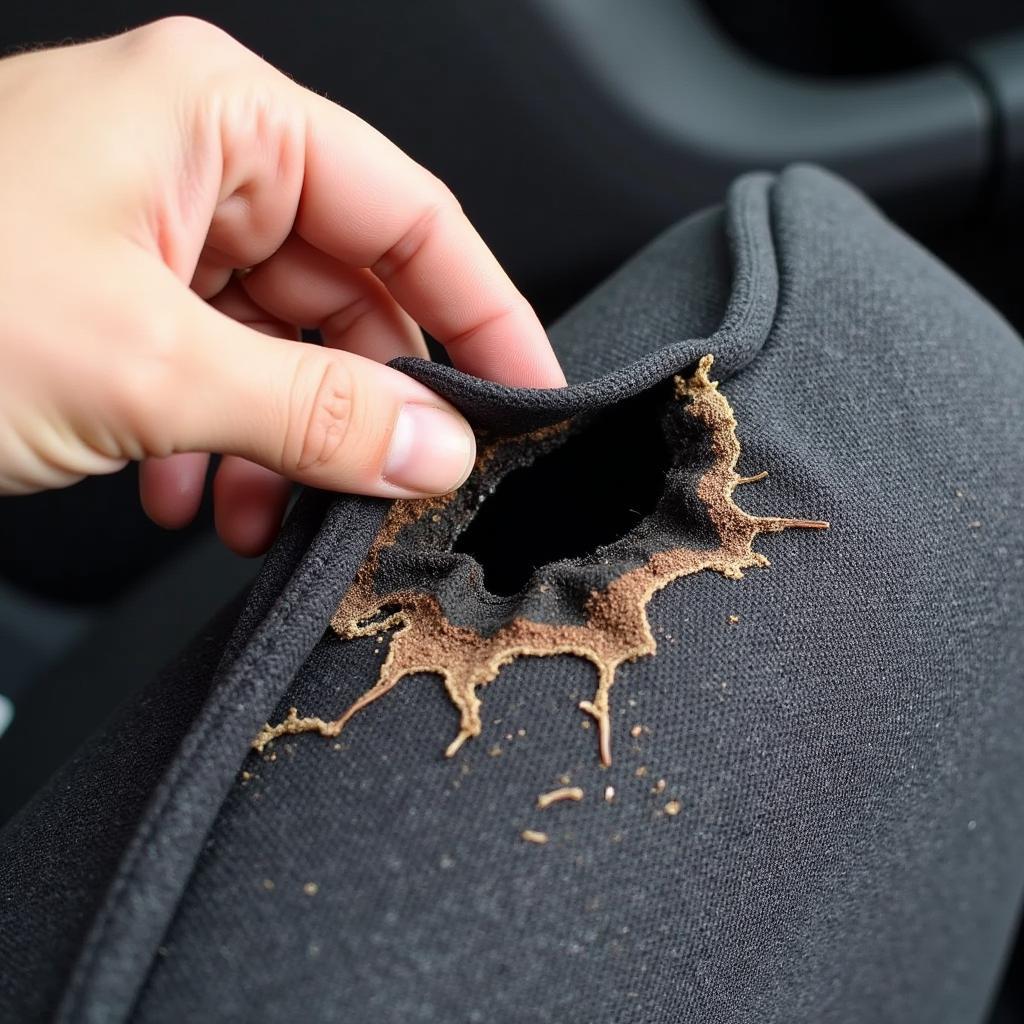
Applying Leather Conditioner to a W123 Seat
Leather car seats are a luxurious and comfortable addition to any vehicle, especially a classic Mercedes-Benz W123. However, over time, leather can become worn, cracked, and faded. Fortunately, with a little effort and the right materials, you can repair your leather car seats and restore them to their former glory. This comprehensive guide will walk you through the process of repairing your W123’s leather car seats, from assessing the damage to applying the final touches.
Assessing the Damage: Know Your Enemy
Before you begin the repair process, it’s crucial to identify the type and extent of damage your leather seats have suffered. This will help you gather the right materials and determine the best course of action. Common types of damage include:
- Cracks: These are splits or breaks in the leather’s surface, often caused by age, dryness, and UV exposure.
- Scratches: Superficial marks on the leather’s surface that haven’t penetrated the full depth.
- Fading: Loss of color due to sun exposure, cleaning products, or natural wear.
- Stains: Discoloration caused by spills, dirt, or dye transfer.
Gathering Your Supplies: The Right Tools for the Job
Having the right tools and materials is essential for a successful leather car seat repair. Here’s a list of what you’ll need:
- Leather Cleaner: A dedicated leather cleaner will remove dirt, grime, and oils without damaging the leather.
- Leather Conditioner: This will help moisturize the leather and prevent future cracking.
- Leather Repair Kit: These kits typically include a filler compound, colorant, and various applicators designed for repairing cracks, tears, and scratches.
- Masking Tape and Paper: Protect surrounding areas from accidental spills or color transfer.
- Microfiber Cloths: Soft and lint-free, these are ideal for applying cleaners, conditioners, and dyes.
- Rubbing Alcohol: For cleaning the leather surface and ensuring proper adhesion of repair products.
- Gloves: Protect your hands from chemicals and dyes.
Step-by-Step Repair Process: Bringing Your Seats Back to Life
Now that you’re prepared, let’s dive into the step-by-step process of repairing your W123’s leather car seats:
- Clean and Prepare: Thoroughly clean the seats with leather cleaner and a microfiber cloth. Pay attention to crevices and seams. Once dry, wipe down with rubbing alcohol.
- Repair Cracks and Tears: Using a leather repair kit, fill in any cracks or tears according to the manufacturer’s instructions. Allow ample drying time between coats.
- Sand and Smooth: Once the filler is completely dry, sand the repaired areas with fine-grit sandpaper until smooth and flush with the surrounding leather.
- Apply Colorant: Carefully apply the leather colorant to the repaired areas, blending it seamlessly with the original leather color. Multiple thin coats are preferable to one thick coat.
- Condition and Protect: After the colorant dries, apply a high-quality leather conditioner to the entire seat to restore moisture and suppleness.
 Applying Leather Conditioner to a W123 Seat
Applying Leather Conditioner to a W123 Seat
Maintaining Your Repaired Seats: Preserving the Luxury
Once your W123’s leather car seats are restored, proper maintenance will keep them looking their best for years to come:
- Regular Cleaning: Clean your leather seats every few weeks with a dedicated leather cleaner.
- Conditioning is Key: Apply leather conditioner every few months to keep the leather hydrated and prevent drying and cracking.
- Sun Protection: Park your car in the shade or use a sunshade to protect your seats from harmful UV rays.
FAQs: Answering Your Leather Seat Repair Questions
Q: Can I repair deep cracks in my leather car seats?
A: Yes, deep cracks can be repaired using a leather filler and colorant. However, for significant damage, it’s best to consult a professional leather repair specialist.
Q: How often should I condition my leather car seats?
A: It’s recommended to condition your leather car seats every 3-4 months. However, if your car is frequently exposed to harsh weather conditions, you may need to condition them more often.
Q: Can I use household cleaners on my leather car seats?
A: It’s not advisable to use household cleaners on leather car seats as they can contain harsh chemicals that can strip the leather of its natural oils, leading to dryness and cracking.
Beyond DIY: When to Call a Professional
While minor repairs can be tackled with a DIY approach, there are situations where seeking professional help is recommended:
- Extensive Damage: If your seats have extensive cracking, tears, or damage beyond the scope of a DIY repair kit, it’s best to leave it to the experts.
- Color Matching Challenges: Matching the color of your leather can be tricky. Professionals have access to a wider range of colorants and techniques to achieve a seamless blend.
- Lack of Time or Confidence: If you’re short on time or not confident in your ability to achieve professional-looking results, a professional leather repair specialist can save you time and frustration.
 Professional Leather Repair Tools
Professional Leather Repair Tools
Conclusion: Reviving Your W123’s Interior
Repairing your W123’s leather car seats is a rewarding endeavor that can significantly enhance your driving experience. By following these steps and using the right materials, you can restore your seats to their former glory and enjoy the luxurious feel of leather for years to come. Remember, regular maintenance is key to prolonging the life of your leather car seats, so be sure to clean and condition them regularly. If you encounter any challenges or are unsure about tackling the repair yourself, don’t hesitate to seek professional assistance. After all, your classic W123 deserves nothing but the best.
Need help with your leather car seat repair or have more questions? Contact our team of experts via WhatsApp at +1(641)206-8880 or email us at [email protected]. We’re available 24/7 to assist you.

